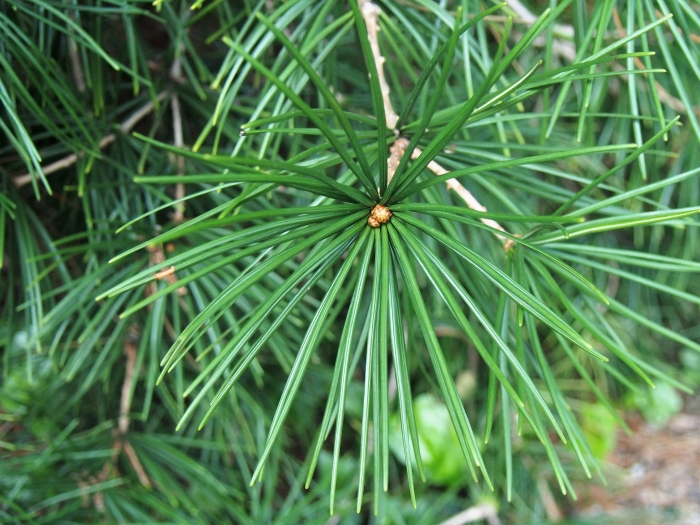Japanese Umbrella Pine
(Sciadopitys verticillata)
Japanese Umbrella Pine (Sciadopitys verticillata)
/
/

Agnieszka Kwiecień, Nova
CC BY-SA 4.0
Image By:
Agnieszka Kwiecień, Nova
Recorded By:
Copyright:
CC BY-SA 4.0
Copyright Notice:
Photo by: Agnieszka Kwiecień, Nova | License Type: CC BY-SA 4.0 | License URL: https://creativecommons.org/licenses/by-sa/4.0 | Uploader: Nova | Publisher: Wikimedia Commons | Title: Sciadopitys_verticillata_Sośnica_japońska_2019-05-17_02.jpg | Notes: == {{int:filedesc}} == {{Information |Description=Sciadopitys verticillata (koyamaki, or Japanese umbrella-pine) |Source=[https://www.flickr.com/photos/35142635@N05/16318496981/ Sciadopitys verticillata (koyamaki, or Japanes

















































Estimated Native Range
Summary
Sciadopitys verticillata, commonly known as Japanese Umbrella Pine, is an evergreen tree endemic to Japan, specifically found in moist, acidic soils of cloud forests and along cool mountain stream banks. It grows to a height of 15–27 meters with a slow growth rate, forming a pyramidal shape. The tree’s unique feature is its whorls of 7–12 cm long flexible green cladodes that resemble leaves but are actually modified stem tissues. The cones are 6–11 cm long, taking about 18 months to mature, with scales that open to release seeds. Sciadopitys verticillata is a living fossil, the sole member of its family, with no close relatives, and has been present in the fossil record for approximately 230 million years.
The Japanese Umbrella Pine is valued for its unique appearance and is often used as a specimen tree in gardens and parks. It requires acidic, well-drained soil and consistent moisture, but once established, it is relatively low-maintenance. It prefers full sun but can tolerate light shade. This tree is not typically used for mass plantings due to its slow growth and the space required for its mature size. While it has no major disease or pest problems, it can suffer from root rot if planted in poorly drained soils.CC BY-SA 4.0
The Japanese Umbrella Pine is valued for its unique appearance and is often used as a specimen tree in gardens and parks. It requires acidic, well-drained soil and consistent moisture, but once established, it is relatively low-maintenance. It prefers full sun but can tolerate light shade. This tree is not typically used for mass plantings due to its slow growth and the space required for its mature size. While it has no major disease or pest problems, it can suffer from root rot if planted in poorly drained soils.CC BY-SA 4.0
Plant Description
- Plant Type: Tree
- Height: 25-30 feet
- Width: 15-20 feet
- Growth Rate: Moderate
- Flower Color: N/A
- Flowering Season: Non-Flowering
- Leaf Retention: Evergreen
Growth Requirements
- Sun: Full Sun
- Water: Medium
- Drainage: Slow, Medium, Fast
Common Uses
Bird Garden, Deer Resistant, Low Maintenance, Rock Garden, Water Garden
Natural Habitat
Moist, acidic soils of cloud forests and along cool mountain stream banks
Other Names
Common Names: Japanese Umbrella Pine, Umbrella-Pine, Japanese Table-Pine, Japanese Umbrella-Pine, Japanische Schirmtanne, Schirmfichte, Schirmtanne, Sapin Parasol Du Japon, Japán Ernyofenyo, Pino A Ombrelli
Scientific Names: , Sciadopitys verticillata, Sciadopitys verticillata var. pendula, Pinus verticillata, Podocarpus verticillatus, Sciadopitys verticillata var. variegata, Taxus verticillata,
GBIF Accepted Name: Sciadopitys verticillata (Thunb.) Siebold & Zucc.